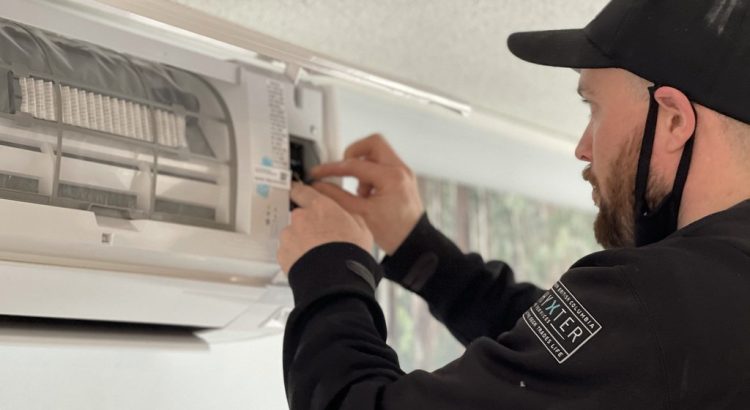HVAC contractors see “wine cellar” and dollar signs light up in their eyes. Suddenly a room that needs to stay at 55 degrees requires some magical specialized equipment that costs five times more than regular air conditioning. Most of it is nonsense designed to separate wine enthusiasts from their money.
That said, regular AC units absolutely will not work for wine storage. They cycle on and off too much, create temperature swings that stress wine, and don’t control humidity properly. So there’s real science behind needing different equipment, even if the pricing seems inflated.
Wine cellar cooling units run constantly at low levels instead of cycling like home air conditioners. This keeps temperature steady, which matters more for wine than hitting some specific “perfect” temperature. A cellar that stays at 58 degrees beats one that bounces between 52 and 56, even though both ranges get called “ideal” by wine magazines.
Size matters but not how people think
Bigger isn’t always better with cooling equipment. Oversized units cycle too much and can’t control humidity properly. Undersized units run constantly without reaching target temperatures. Getting the sizing right requires actual calculations, not guesswork based on room size.
Heat load calculations sound complicated but really just account for everything that adds heat to the space. Poor insulation, lighting, people walking in and out, even the heat generated by the cooling unit itself. Skip this step and end up with equipment that either works poorly or costs way too much to operate.
Through-wall units work like giant window air conditioners designed for wine storage. Cheaper upfront but require cutting holes in walls, which limits where they can go. Plus they dump heat outside, so installation location matters for efficiency.
Split systems cost more but offer flexibility. Condenser goes outside, cooling unit goes inside, connected by refrigerant lines. Sounds simple until dealing with electrical requirements, drainage, and refrigerant line installation that requires certified technicians.
Self-contained units fit entirely in the cellar but create their own problems. They generate heat while cooling, which sounds counterproductive because it is. Need adequate ventilation or they fight against themselves trying to cool space while heating it up.
Installation nightmares nobody warns about
Electrical work often requires panel upgrades because wine cellar cooling units draw more power than standard household circuits provide. Electricians love this because it means bigger jobs and higher bills. Sometimes unavoidable, sometimes just expensive upselling.
Drainage becomes critical for units that extract moisture from air. Condensate has to go somewhere, and basement installations often need pump systems because gravity drainage isn’t possible. Pump failures flood cellars, which ruins wine faster than temperature problems.
Refrigerant line work requires special licenses and equipment. DIY attempts usually fail because proper line sizing, connections, and system charging require training and tools most people don’t have. Plus mistakes void warranties and can damage expensive equipment.
Noise considerations get ignored until cooling units start running continuously near bedrooms or living spaces. Some units sound like freight trains, others whisper quietly. Price doesn’t always correlate with noise levels, which seems backwards but reflects real market conditions.
Reality check on what actually works
Through-wall units handle most residential wine cellars adequately despite marketing claims about needing expensive split systems. Proper insulation matters more than fancy cooling equipment for maintaining stable storage conditions.
Regular maintenance extends equipment life significantly while maintaining warranty coverage. Establishing service relationships before problems arise ensures prompt attention when cooling failures threaten wine collections.
Understanding actual cooling requirements rather than marketing hype helps avoid overbuying expensive equipment that provides minimal benefits over simpler alternatives. Most wine collections need reliable temperature control, not aerospace-grade climate systems that impress visitors more than they protect wine.





